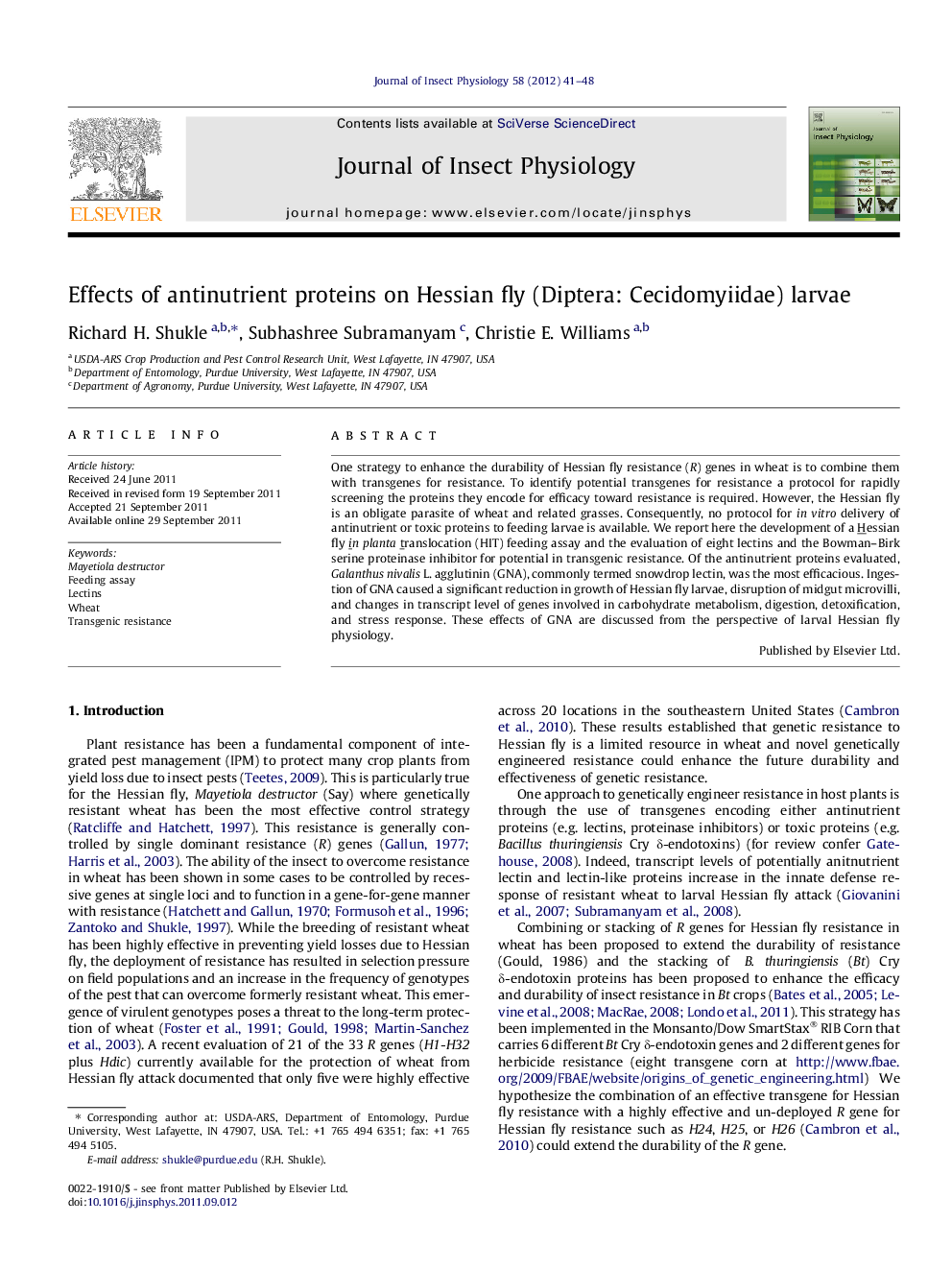| Article ID | Journal | Published Year | Pages | File Type |
|---|---|---|---|---|
| 5921959 | Journal of Insect Physiology | 2012 | 8 Pages |
One strategy to enhance the durability of Hessian fly resistance (R) genes in wheat is to combine them with transgenes for resistance. To identify potential transgenes for resistance a protocol for rapidly screening the proteins they encode for efficacy toward resistance is required. However, the Hessian fly is an obligate parasite of wheat and related grasses. Consequently, no protocol for in vitro delivery of antinutrient or toxic proteins to feeding larvae is available. We report here the development of a Hessian fly in planta translocation (HIT) feeding assay and the evaluation of eight lectins and the Bowman-Birk serine proteinase inhibitor for potential in transgenic resistance. Of the antinutrient proteins evaluated, Galanthus nivalis L. agglutinin (GNA), commonly termed snowdrop lectin, was the most efficacious. Ingestion of GNA caused a significant reduction in growth of Hessian fly larvae, disruption of midgut microvilli, and changes in transcript level of genes involved in carbohydrate metabolism, digestion, detoxification, and stress response. These effects of GNA are discussed from the perspective of larval Hessian fly physiology.
Graphical abstractDownload full-size imageHighlights⺠We developed a feeding assay for Hessian fly larvae. ⺠The effects of several antinutrient proteins on the growth and development of larvae were determined. ⺠Results documented some antinutrient proteins have potential for transgenic resistance in wheat to Hessian fly. ⺠Such transgenes can enhance the efficacy and durability of resistance in wheat.
